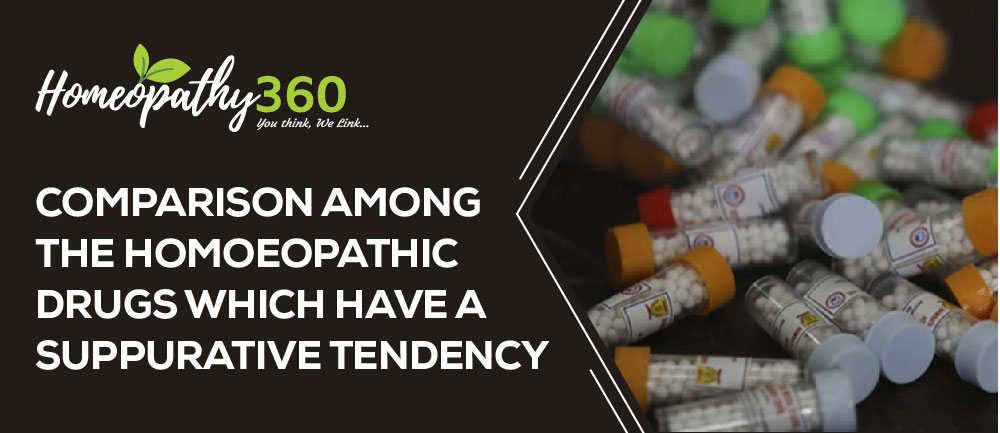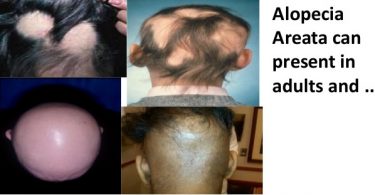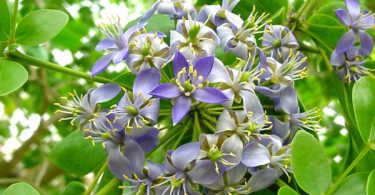
Comparison among the homoeopathic drugs which have a suppurative tendency
ABSTRACT:
Suppuration is a kind of inflammation mostly due to bacteria (methicillin resistant staphylococcus aureus) comprises the making of large amount of pus. The chemotoxins which are liberated by bacteria result in a dense accumulation of neutrophils which undergo autolysis results in tissue destruction. The tissue damage resolution does not occur and causes fibrous scarring.
The suppurative tendency is inherent or acquired tendency of the organism in homoeopathy rather than surgical disease. The individualistic approach and constitutional medicines eradicated the conditions effectively. Medicines are well mentioned in different source books and homoeopathic repertories of homoeopathy. It should be treated by dynamic medicine avoiding treatment based upon local symptoms.
KEY WORDS: Suppuration, homoeopathy, constitutional medicine, susceptibility.
ABBREVIATIONS: IL – interleukin, TNF – tumout necrosis factor, WBC – white blood cell
INTRODUCTION:
Suppuration which comes from french word ‘suppuration’ or directly from latin word ‘suppurationem’. [1]
The process of abscess formation is known as suppuration. When acute bacterial infection is accompanied by intense neutrophilic infiltrate in the inflamed tissue, it results in tissue necrosis. A cavity is formed which is called an abscess and contain purulent exudate or pus causes suppuration. An abscess may be discharged to the surface due to increase pressure inside or may require drainage. Due to tissue destruction, resolution does not occur but instead healing by fibrous scarring takes place. [2]
Some of the common examples of suppuration:
- Boil or furuncle – an acute inflammation via hair follicle in the dermal tissue.[2]
- Carbuncle – it is seen in untreated diabetes and occurred as a loculated abscess in the dermis and soft tissues of the neck.[2]
- Chronic abscess – It is more insidious during its formative existence; slower in its course, little or no pain and no discoloration of the integuments. They are very apt to remain stationary for years and sometimes never discharge but gradually become reabsorbed.[3]
- Cold abscess – It is also known as lymphatic abscess. It occurs with but few if any premonitory symptoms and usually unaccompanied by pain at any time. Cachectic individuals, scrofulous individuals are particularly prone to it and they have a large fluctuating tumor appearing suddenly in groin, axilla or iliac fossa. The contained fluid is thin, purulent, offensive matter.[3]
- Diffused Abscesses – They are such as occur in the cellular tissue after erysipelas and inflammation and extend rapidly in all direction forming sinuses and burrowing to a great extent.[3]
- Fistula –It is a canal leading from the skin into the abscess. From some cause, the abscess after operating either by knife or spontaneously, sometimes refuses to close up. These causes may be the presence of foreign body, as a piece of bone or the constant passage of irritating discharges through a wound. Whatever the cause may be, a canal is formed, permanently open, which eventually has the sides converted into fibrous material and is a source of constant annoyance.[3]
Causative AGENT:
The most common bacterial organisms which are responsible for suppuration [4]
- Staphylococcus aureus
- Streptococcus pyogens
- Mycobacterium tuberculosis and atypical mycobacterial infection
- Fungal infection, a kerion
- Viral infection, for example – herpes simplex
- Infestations or parasitic infections
Suppuration may affect healthy people in the following circumstances.
- Metabolic syndrome and obesity
- Smoking, diabetes, immune compromise, intravenous drug users
PATHOPHYSIOLOGY OF SUPPURATION [5] –

SIGN AND SYMPTOMS OF SUPPURATION[6] –
Symptoms of suppuration – There is throbbing pain at the site of suppuration, which caused due to pus or pressure on the nerve ending by the pus. Fever with or without chill, rigors can be present.
Signs of suppuration –
- Heat
- Redness
- Pain
- Swelling
- Fluctuation
- Loss of function
management:
Surgical treatment-Incision and drainage under general or local anesthesia because the presence of infection and pain.
WHY WE SHOULD CHOOSE HOMOEOPATHIC TREATMENT FOR SUPPURATIVE TENDENCY?
Homoeopathy is one of the most popular holistic system of medicine. The selection of remedy is based upon the theory of individualisation and symptoms similarity by using holistic approaches. As we know this is very common in day to day life to have continual suppurative tendency to abscess or boils which cannot be completely eradicated (i.e. it recurs again and again) by surgical means or allopathic treatment procedure but in case of homeopathic treatment we can eradicate this condition by constitutional medicine by help of symptoms similarity. This the only way through which a state of complete health can be regained by removing all the sign and symptoms from which the patient is suffering. The aim of homoeopathy is not only to treat the suppuration but also to address its underlying cause and individual susceptibility. As far as therapeutic medication is concerned from our knowledge of materia medica, there are some leading remedies which are very helpful to treat the suppuration that can be selected on the basis of cause, sensations and modalities of the complaints along with the comparison of different repertories. [7]
Therapeutics indication – There are some medicine which are very useful to treat the suppuration effectively. These medicines are discussed here with indications.
- Aconitum napellus [8, 9, 10]: Red, shining, hot swellings; violent pains.
Boil highly inflamed; fever with dry, hot skin.
In hyperaemia, congestion not after exudation has set in.
Associated with physical and mental restlessness, fright, is the most characteristic manifestation of Aconite.
- Anthracinum[8, 9, 10, 11]: In carbuncle, malignant ulcer and complaints with ulceration, sloughing and intolerable burning.
- When Arsenicum album or the best selected remedy fails to relieve the burning pain of carbuncle or malignant ulceration.
Carbuncle; with horrible burning pains; discharge of ichorous offensive pus.
Malignant pustules; black or blue blisters; often fatal in twenty-four or forty-eight hours
- Arnica montana[8, 9, 10, 11]: Tendency to small, painful boils, one after another, extremely sore.
Compound fractures and their profuse suppuration
Concussions and contusions, results of shock or injury; without laceration of soft parts; Prevents suppuration and septic conditions and promotes absorption.
Crops of small boils, which are very painful and sore to touch.
- Arsenicum album[8, 9, 10, 11]: when an abscess threaten to become gangrenous; great debility, parts burn like fire.
Great burning; relieved by heat; great restlessness, lancinating pain.
Ulcer on the heel with bloody pus.
- Belladonna[8, 9, 10, 11]: Bright redness, especially radiating redness; much burning; part feel dry and hot.
Decided aggravation from slight jar.
Mammary, hepatic or rather glandular abscesses.
Boil on shoulder.
Painful blister containing water on the sternum.
- Bryonia alba[10]: In the beginning when the part is very pale and hard.
- Calcarea carbonicum[8, 9, 11, 12]: There is a pyaemic state, in which there are abscesses in deep muscles. Abscesses deep in the neck, deep in the thigh, in the abdomen.
Eradicates predisposition to boils.
Blood-boils: appear on head, neck and shoulders, or on thigh instead of his asthma, during new moon; on both cheeks in front of ears; on right knee, can press out quantity of pus.
In Kent’s Materia Medica, under the remedy Calcarea carbonicum, it is mentioned:
There are times when Silicea is indicated and the abscess is in such a dangerous place that if Silicea is given the result that naturally belongs to the spreading of that abscess is dangerous; in such an instance the surgeon must be called to drain the abscess in a safe manner, even when we know that if that abscess was located in a safe place, it would be far better for that patient to have the remedy he needs.12
- Calcarea sulphuricum[9]: Suppurative processes come within the range of this remedy, after pus has found a vent.
Painful abscesses about the anus in cases of fistula.
Suppurating stage of tonsillitis, when abscess is discharging.
Yellow, purulent crusts or discharge.
- Fluoricum acidum[8, 9, 11]:Dental fistula, with persistent bloody, salty discharge.
Lachrymal fistula.
Frequent small boils; carbuncles.
Periosteal abscess.
- Hepar sulphuricum[8, 9, 10, 11]: The slightest injury causes suppuration
In diseases when suppuration seems inevitable, Hepar sulphuricum may open the abscess and hasten the cure.
Abscess of the axillary gland.
Buboes, abscesses of the inguinal glands.
May be given in high potency to prevent suppuration before the opening of an abscess, particularly when there is throbbing.
Pus which may be bloody smells like old cheese.
- Lachesis mutus [8, 9, 10, 11]: Boils, carbuncles, ulcers with intense pain; malignant pustules; decubitus; dark, bluish, purple appearance; tend to malignancy.
After the pus has formed parts of purplish hue; gangrenous,
Worse after sleep.
- Mercurius solubilis [8, 9, 10, 11]: Suppuration of lungs, after haemorrhages of pneumonia.
In bone diseases, pains worse at night; glandular swellings with or without suppuration, but especially if suppuration be too profuse.
Cold swellings; abscesses, slow to suppurate.
When the pus is coming out and is scanty or after pus has formed (never to be given before the formation of pus).
Pain is throbbing, burning, stinging, bloody pus.
- Phytolocca decandra[8, 9, 11]-Mammary abscess; fistulae, gaping, angry ulcers; pus sanious, ichorous, foetid; unhealthy.
Breast, shows an early tendency to cake; is full, stony, hard and painful, especially when suppuration is inevitable
Tumefied breast neither heals nor suppurates, is of a purple hue and “hard as old cheese”.
Hastens suppuration.
- Secale cornutum [8, 9, 11]: Boils-small, painful with green contents, mature very slowly and heal in the same manner; very debilitating.
Carbuncles; extensive ecchymoses.
The skin feels cold to the touch, yet the patient cannot tolerate covering; icy coldness of extremities. Very old, decrepit, feeble persons.
- Silicea terra[8, 9, 10, 11]: Small wounds in skin heal with difficulty and easily suppurate.
- Small wounds suppurate profusely.
- Suppuration of skin and cellular tissues beneath it.
Boils come in crops; tendency to boils; leave indurations.
Abscesses speedily point, but secretion of pus is too scanty.
Very useful when fistulous opening has formed.
In chronic abscess when discharge is tardy, long- continued.
- Sulphur[8, 9, 10, 11]:Boils: coming in crops in various parts of the body, or a single boil is succeeded by another as soon as first is healed.
Suppuration: pus thin, black, putrid.
Abscesses: pus yellow, offensive, full of air bubbles.
- Tarentula hispanica[8, 9, 10, 11]: Anthrax; carbuncles; atrocious pains.
- Syphilitic buboes, painful boils, all kinds of abscesses where pain or inflammation predominates.
Carbuncle as large around at its base as a silver dollar, apex studded with small openings on side of chest; no pus discharging; intense burning and stinging extending to mamma and down arm; had not slept for forty- eight hours.
Worse from slightest touch
Sloughing carbuncle, Great prostration.
Complaints are continually relapsing; seems to get almost well when disease returns.
- Tuberculinum[8, 9, 11]–Crops of small boils, intensely painful, successively appear in the nose; green, foetid pus.
When with a family history of tubercular affections, the best selected remedy fails to relieve or permanently improve, without reference to name of disease.
Emaciation rapid and pronounced; losing flesh while eating well.
Symptoms ever changing; ailments affecting one organ, then another – the lungs, brain, kidneys, liver, stomach, nervous system – beginning suddenly, ceasing suddenly.
REPORTORIAL DISTRIBUTION OF SUPPURATION IN THE REPERTORY OF THE HOMOEOPATHIC MATERIA MEDICA BY J. T. KENT[13]:
CHAPTER: HEAD
ABSCESS: Calc., hep.,lyc., merc., sil
ERUPTION, suppurating : Ars., bar-m., calc-s., cic., clem., graph., hep., lyc., mez., psor., rhus-t., sep., staph., Sulph., vinc.
CHAPTER: EYE
FISTULA of the cornea :Sil.
lachrymalis : Agar., apis., arg-n., aur-m., brom., Calc., chel., Fl-ac., hep., lach., lyc., mill., nat-c., nat-m., nit-ac., Petr., phyt., Puls., Sil., stann., sulph.
discharging pus on pressure : Puls., sil., stann.
suppurating: Calc., Puls.
CHAPTER: EAR
ABSCESS behind(See Boils, suppuration) : Anan., Aur., bar-m., caps., carb-an., kali-c., nit-ac., phys., Sil.
every two weeks ear gathers and discharges : Iris.
below : Nat-h.
in meatus : Calc-s., crot-h., Hep., mag-c., puls., Sil.
menses, during : Puls.
ERUPTION:boils : Kali-c., sil., spong., sulph., syph.
INFLAMMATION,suppurative :Arn., caps.
SUPPURATION, middle ear : Am-c., bar-c., Calc-s., calc., caps., carb-an., carb-v., caust., Hep., hydr., Kali-bi., kali-p., lyc., Merc., nat-m., olnd., puls., sil., spong., stann., sulph.
behind ear : Kali-c., nit-ac., phyt.
in front of ear : Merc
CHAPTER: NOSE
ABSCESS: Calc., Hep.,lac-c., lach., merc., Sil., still.
at root : Puls.
CHAPTER: FACE
ABSCESS : Anan., bell., Hep., kali-i., Merc., phos., sil.
antrum : Kali-i., lyc., merc., mez., Sil.
jaw :Ars., phos.
lip :Anthr.
upper :Bell.
parotid glands : Ars., lach., lyc., phos., phyt., rhus-t., Sil.
submaxillary glands : Calc., hippoz., kali-i., lach., phos., sil.
ERUPTION, tubercles,suppurating :Fl-ac., nat-c., sil.
INFLAMMATION: Parotid Gland:
suppuration, with : Ars., Brom., bry., Calc., con., Hep., lach., Merc., nat-m., phos., Rhus-t., Sil., sul-ac.
SUPPURATION of lower jaw :Phos.
CHAPTER: MOUTH
ABSCESS, Gums: Alum., am-c., aur., bufo., eupho., hecla., hep., jug-r., lach., merc., petr., phos., plb., sil.
frequently recurring : Bar-c., calc., Caust., hep., lyc., nux-v., sil., sulph.
sensation of : Am-c.
BOILS, Gums : Agn., anan., arn., aur., carb-an., carb-v., caust., chel., eupho., jug-r., kali-chl., kali-i., lac-c., lyc., merc., mill., nat-m., nat-p., nat-s., nux-v., petr., ph-ac., phos., plan., plb., Sil., staph.
small, near left upper canine, painful to touch : Agn
FISTULA, Gums : Aur-m., aur., bar-c., calc., canth., Caust., coch., Fl-ac., kali-chl., lyc., mag-c., nat-m., nit-ac., petr., phos., Sil., staph., sulph.
near upper right canine : Fl-ac.
upper incisors : Canth
SUPPURATION, Gums : Am-c., canth., carb-an., carb-v., caust., hep., lach., merc., mez., nat-s., petr., phos., puls., Sil.
Tongue :Canth., carb-ac., lach., merc-c., merc.
VESICLES,suppurating :Phos.
VESICLES, Tongue,suppurating : Mag-c.
CHAPTER: TEETH
ABSCESS of roots : Am-c., bar-c., calc., canth., caust., eupho., hecla., Hep., lach., lyc., merc., petr., phos., plb., Sil., sulph.
CHAPTER: THROAT
SUPPURATION, tonsils : Aesc., alumn., am-m., anac., anan., apis., aur., bar-c., Bar-m., bell., calc-s., calc., canth., cham., cub., cupr., cur., daph., guai., Hep., ign., kali-bi., lac-c., lach., lyc., manc., merc-c., merc-i-f., merc-i-r., Merc., phyt., plb., sabad., sang., sep., Sil., sulph.
right : Bar-c., lyc.
left :Lach.
CHAPTER: EXTERNAL THROAT
ABSCESS : Cham., Hep., kali-c., kali-i., lach., lyc., Merc., nit-ac., phos., psor., sep., Sil., sul-ac., sulph.
FISTULÆ :Phos., sil.
SWELLING, Cervical glands,suppurative :Calc., cist., hep., lith., Merc., nit-ac., Sil., sulph., tub.
CHAPTER: ABDOMEN
ABSCESS in walls :Hep., rhus-t., sil., sulph.
Inguinal region :Hep., merc., sil., syph.
Liver :Fl-ac., Hep., kali-c., lach., lyc., Merc-c., nux-v., Sil., ther.
Spleen: Hippoz.
FISTULÆ inguinal glands :Hep., lach., phos., sil., sulph.
SUPPURATION, inguinal glands : Ars., aur., bar-m., bufo., carb-an., chel., crot-h., Hep., Iod., kali-i., Lach., Merc., nit-ac., phos., sil., sulph., thuj.
CHAPTER: RECTUM
ABSCESS :Calc-s., calc., hep., merc., sil., syph., thuj.
just below the coccyx : Paeon.
perineum :Hep., merc., sil.
HÆMORRHOIDS, suppurating : Anan., carb-v., hep., ign., merc., Sil.
CHAPTER: BLADDER
SUPPURATION (See Urine): Canth.,sars., ter.
CHAPTER: KIDNEY
ABSCESS :Ars., hep., hippoz., merc., sil.
INFLAMMATION,suppurative :Ars., hep., hippoz., merc., sil.
CHAPTER: PROSTATE GLAND
SUPPURATION: Hep.,Sil.
CHAPTER: GENTALIA MALE
SUPPURATION, prepuce, under the : Caps., Cinnb., cor-r., hep., jac., jug-r., lyc., Merc-c., merc., nit-ac., sep.
Testes :Phyt.
CHAPTER: GENITALIA FEMALE
ABSCESS :Hep., kali-p., merc., nit-ac., sep., sulph.
ovaries : Bell., crot-h., hep., lach., merc., plat., psor., sil.
left :Lach
FISTULA, vagina :Asar., Calc., carb-v., caust., lach., lyc., nit-ac., puls., Sil.
CHAPTER: CHEST
SUPPURATION of lungs (See Abscess)
ABSCESS
Axilla : Am-c., apis., ars., bell., bufo., cadm., calc-s., calc., cedr., coloc., crot-h., Hep., kali-bi., kali-c., lac-c., merc-i-r., Merc., nat-m., nat-s., Nit-ac., petr., ph-ac., prun-s., Rhus-t., sep., Sil., sulph., thuj.
Lungs: Calc., crot-h., Hep., hippoz., kali-c., kali-n., kali-p., lach., led., lyc., mang., merc., Phos., plb., psor., puls., sep., Sil., sul-ac., sulph., tub.
left :Calc.
Mammæ : Apis., bell., bry., bufo., camph., cist., crot-h., graph., Hep., kreos., lach., Merc., Phos., Phyt., sars., Sil., Sulph., tarent-c.
threatening, on old cicatrices : Graph., Phyt.
nipples : Cast-eq., cham., merc., sil.
INDURATION, Mammæ, abscess, after :Con., graph.
PAIN, Axilla,in scar of an old abscess :Thuj.
PAIN, stitching, heart, suppurative deep in chest :Phos.
CHAPTER: BACK
ABSCESS : Asaf., hep., iod., lach., mez., ph-ac., sil., staph., sulph., tarent-c.
Cervical region :Lach., lyc., petr., ph-ac., psor., sec., sil., tarent-c.
old cicatrices : Sil.
Lumbar region :Calc-p.
psoas :Ars., cupr., ph-ac., sil., staph., symph., syph.
ERUPTIONS, pimples, suppurating :Chlor., kali-bi.
ERUPTIONS,pimples, Cervical region, flattened, suppurating :Calc-p., nat-c.
FISTULÆ :Calc-p., hep., ph-ac., Phos., Sil., Sulph.
CHAPTER: EXTREMITIES
ABSCESS, joints :Calc-p., hep., merc., phos., sil.
tendons :Mez.
Upper limbs : Anan., sil.
gangrenous : Anan.
wounds, after dissecting : Ars., lach., sil.
Upper arm : Agar.
deltoid : Agar.
Elbow :Crot-h.
Forearm :Plb.
Hand : Anan., lach.
back of : Plb.
palm :Ars., cupr., fl-ac., sulph.
Fingers :Fl-ac., hep., lach., mang.
Lower limbs :Anan., chin.
psoas : Arn., asaf., chin., cupr., ph-ac., sil., staph., sulph., symph., syph.
Nates : Carb-o., sulph., thuj.
Thigh :Hep., lach., Sil., tarent.
Knee :Bell., calc., guai., hep., hippoz., iod., ol-j., Sil.
gonarthrocace :Ars., Calc., iod., Sil.
Leg :Sulph.
calf : Chin.
Ankle joint : Ang., guai., ol-j., sil.
Foot :Merc., sil., tarent.
heel : Am-c., ars., lach.
Toes :Cocc.
CHILBLAINS, Feet, suppurating :Lach., sil., sulph.
CONTRACTION, Thigh, hamstrings, abscess, after :Lach.
ERUPTION, elbow, vesicles, suppurating :Sulph.
ERUPTION,Hand, pimples, suppurating :Anac., elaps.
ERUPTION, lower limbs, pustules, suppurating : Con., thuj.
ERUPTION, foot, vesicles, suppurating :Con., graph., nat-c., sel
FELON, suppurativestage :Calc-s., Hep., Sil.
SUPPURATION, elbow (See Abscess) :Dros., tep.
Forearm :Lyc., plb.
Fingers : Bor., mang.
nails (See Felon)
around : Con., ph-ac.
under : Form.
of first finger : Calc., nat-s.
after vaccination : Thuj.
Hip(See Hip Joint Disease) : Ars., asaf., asar., aur., calc-p., calc-s., calc-sil., calc., Chin., graph., hep., merc., ph-ac., puls., rhus-t., sep., Sil., staph., stram., sulph.
Knee :Hippoz., iod.
Ankle :Arn., hep.
Foot :Rhus-v., sec., vip.
scurf :Sil.
Sole, sensation of : Calc., kali-n., lyc., prun-s., spig.
heel :Berb., bor., fago.
Toe, under nail of left great toe :Caust
CHAPTER: SKIN
ERUPTIONS, crusty, suppurating :Ars., plb., sil., sulph.
ERUPTIONS, herpetic, suppurating : Ars., bell., cadm., cic., clem., cocc., con., cycl., dulc., hep., jug-c., led., lyc., mag-c., Merc., nat-c., nat-m., petr., plb., puls., Rhus-t., sars., Sep., sil., spig., staph., sulph., tarax., thuj., verat., viol-t., zinc.
ERUPTIONS, pocks, suppurating : Bell., merc., sulph.
ERUPTIONS,suppurating : Alum., am-c., Ant-c., ant-t., apis., ars., bar-c., bell., bor., cadm., calc-s., calc., carb-s., carb-v., caust., Cham., chel., cic., clem., cocc., con., croc., cycl., dulc., euphr., Graph., hell., hep., jug-c., kali-c., kali-s., lach., led., Lyc., mag-c., mang., Merc., mur-ac., nat-a., nat-c., nat-m., nat-p., Nit-ac., nux-v., olnd., par., Petr., ph-ac., phos., plb., psor., puls., Rhus-t., samb., sars., sec., Sep., Sil., spig., squil., staph., sulph., tarax., thuj., verat., viol-o., viol-t., zinc.
ERUPTIONS, tubercles, suppurating : Am-c., bov., caust., fl-ac., kali-bi., nat-c., nit-ac., sil.
ERUPTIONS, vesicular,suppurating :Am-m., aur., bov., calc., carb-v., graph., mag-c., nat-c., nit-ac., petr., phos., puls., ran-b., ran-s., rhus-t., sars., sulph., vip., zinc.
EXCRESCENCES, condylomata, suppurating :Thuj.
ULCERS, suppurating : Acon., am-c., ambr., anac., ant-c., ant-t., arg-m., arn., ars-i., Ars., Asaf., aur., bar-c., bell., bov., bry., calc., canth., caps., carb-an., carb-s., carb-v., Caust., cham., chel., chin., cic., clem., cocc., con., croc., dros., dulc., graph., hell., Hep., hyos., ign., Iod., ip., kali-ar., kali-c., kali-n., kali-s., kreos., lach., led., lyc., mang., Merc., mez., mur-ac., nat-c., nat-m., nat-p., nit-ac., nux-v., petr., ph-ac., phos., plb., Puls., ran-b., ran-s., Rhus-t., ruta., sabad., sabin., sars., sec., sel., sep., Sil., spig., spong., squil., staph., sul-ac., Sulph., thuj., viol-t., zinc.
WARTS, suppurating :Ars., bov., calc., caust., hep., nat-c., sil., thuj.
CHAPTER: GENERALITIES
ABSCESSES: Anan., ant-c., ant-t., anthr., ars-i., ars., asaf., bar-c., bry., Calc-i., Calc-s., calc., caps., carb-v., cic., cocc., con., croc., crot-h., dulc., guai., Hep., kali-c., kali-chl., Lach., mag-c., Merc., mez., nat-c., nat-m., nit-ac., nux-v., olnd., paeon., petr., puls., pyrog., sec., sep., Sil., staph., stram., sulph., tarent-c.
burning :Anthr., Ars., pyrog., Tarent-c.
recurrent :Pyrog., syph.
glands : Bar-m., bell., brom., Calc-s., Calc., canth., carb-v., cist., coloc., crot-h., dulc., guai., Hep., hyos., ign., Kali-i., kreos., lach., lyc., Merc., nit-ac., petr., phos., pyrog., rhus-t., sars., sep., Sil., squil., stram., Sulph., syph., tub.
CONVULSION, suppuration, during :Ars., bufo., canth., lach., tarent.
FISTULÆ of glands :Phos., sil., sulph.
SUPPURATION(See Abscess):
WOUNDS, suppurating (See Skin, Unhealthy):
UNHEALTHY: Alum., am-c., apis., bar-c., bar-m., Bor., bufo., calc-s., Calc., caps., Carb-s., carb-v., Caust., Cham., chel., clem., con., croc., crot-h., fl-ac., Graph., ham., hell., Hep., kali-c., Lach., lyc., mag-c., mang., merc., mur-ac., nat-c., nat-p., nit-ac., nux-v., Petr., ph-ac., phos., plb., Psor., puls., Rhus-t., sars., sep., Sil., squil., staph., still., sulph., tarax., tarent.
CONCLUSION:
According to Hahnemann “No external malady can arise, persist or even grow worse without some internal cause, without the co-operation of the whole organism”. [7]
In “The Guiding Symptoms of Our Materia Medica” under the remedy Anthracinum, Dr Hering says: “To call a carbuncle a surgical disease is the greatest absurdity. An incision is always injurious and often fatal. A case has never been lost under the right kind of treatment, and it should always be treated by internal medicine only.”[8]
It should be treated internally by dynamic medicine even in the treatment of abscesses. In homoeopathy, the local symptoms proper aren’t considered but one considers the patient as a whole.
So the aim of homoeopathy is not only to treat the suppuration but also to address its underlying cause and individual susceptibility. By the help of constitutional treatment, one can eradicate the continual tendency to suppuration as per guideline said by Dr Samuel Hahnemann in Organon of Medicine.
REFERENCES:
[1] Etymonline.com. 2020. Suppuration | Origin And Meaning Of Suppuration By Online Etymology Dictionary. [online] Available at: <https://www.etymonline.com/word/suppuration#:~:text=early%2015c.%2C%20from%20French%20suppuration,of%20pus%20(see%20pus). [Accessed 1 June 2020]. [2] mohan H. Text Book of Pathology. 6th Edition, Reprint. New Delhi: Jaypee Brothers medical Publishers (p) Ltd.; 2010. Chapter 6, Inflammation and Healing; p.145-47. [3] Gilchrist JG. The Homoeopathic Treatment of Surgical Diseases. 1st Edition, Reprint. New Delhi: B. Jain Publishers (P) Ltd; 2004. Suppuration; p.341-50. [4] Oakley, A., 2020. Cutaneous Abscess | Dermnet NZ. [online] Dermnetnz.org. Available at: <https://dermnetnz.org/topics/cutaneous-abscess/> [Accessed 2 June 2020]. [5] Brandt, S., Putnam, N., Cassat, J. and Serezani, C., 2018. Innate Immunity to Staphylococcus aureus: Evolving Paradigms in Soft Tissue and Invasive Infections. The Journal of Immunology, [online] 200(12), pp.3871-3880. Available at: <https://www.jimmunol.org/content/200/12/3871/tab-article-info> [Accessed 2 June 2020]. [6] En.m.wikipedia.org. 2020. Abscess. [online] Available at: <https://en.m.wikipedia.org/wiki/Abscess#:~:text=The%20main%20symptoms%20and%20signs,the%20pus%20inside%20the%20abscess.> [Accessed 2 June 2020]. [7] Hahnemann CFS. Organon of Medicine. Low Priced Edition. New Delhi: B. Jain Publishers (P) Ltd; August 2002.p.103-09. [8] Hering C. The Guiding Symptoms of Our Materia MedicaVol I- X. 11th impression. New Delhi: B. Jain Publishers (P) Ltd; 2016. [9] Boericke W. Pocket manual of Homoeopathic Materia Medica with repertory. 3rd Revised and augmented edition. New Delhi: B. Jain Publisher Pvt.ltd.; 2006. p. 7-11, 54, 76-83, 110-15, 144-48, 154-55, 289-91, 325-28, 387-90, 514-16, 578-81, 590-94, 620-23, 633, 655-59. [10] Bhanja KC. The Homoeopathic Prescriber. 6th Edition. Calcutta: National Homoeo Laboratory; 2002. p. 94-95, 119-20. [11] Allen HC. Keynotes And Characteristics with Comparisons of some of the leading Remedies of the Materia Medica with Bowel Nosodes. 8th Edition. New Delhi: B. Jain Publishers (P) Ltd; 2013. p. 28-29, 41-47, 57-59, 138-39, 149-51, 245-47, 283-85, 291-94, 306-07, 328-30. [12] Kent JT. Lectures on Homoeopathic Materia Medica. Reprint edition. New Delhi: B.Jain Publisher Pvt.ltd.; 2002. Calcarea Carb; p.273. [13] Kent JT. Repertory of the Homoeopathic Materia Medica. Reprint Edition. New Delhi: B. Jain Publishers (P) Ltd; 2016. P.107-1423.About the authors
- Dr Suman Samanta, M. D. (Hom.), Ex – lecturer Metropolitan Homoeopathic Medical college & Hospital, Kolkata
- Dr Supriya Pramanik, M. D. (Hom.),SMO I/C (Homoeopathic Unit), CGHS Wellness Center, Laxmi Nagar, New Delhi, Ministry of AYUSH, Govt. of India
- Dr Prabin Kumar Shaw, M. D. (Hom.), Corresponding author, Research Officer (H)/Scientist -1,Clinical Research Unit for Homoeopathy, Dimapur, CCRH, Ministry of AYUSH, Govt. of India





